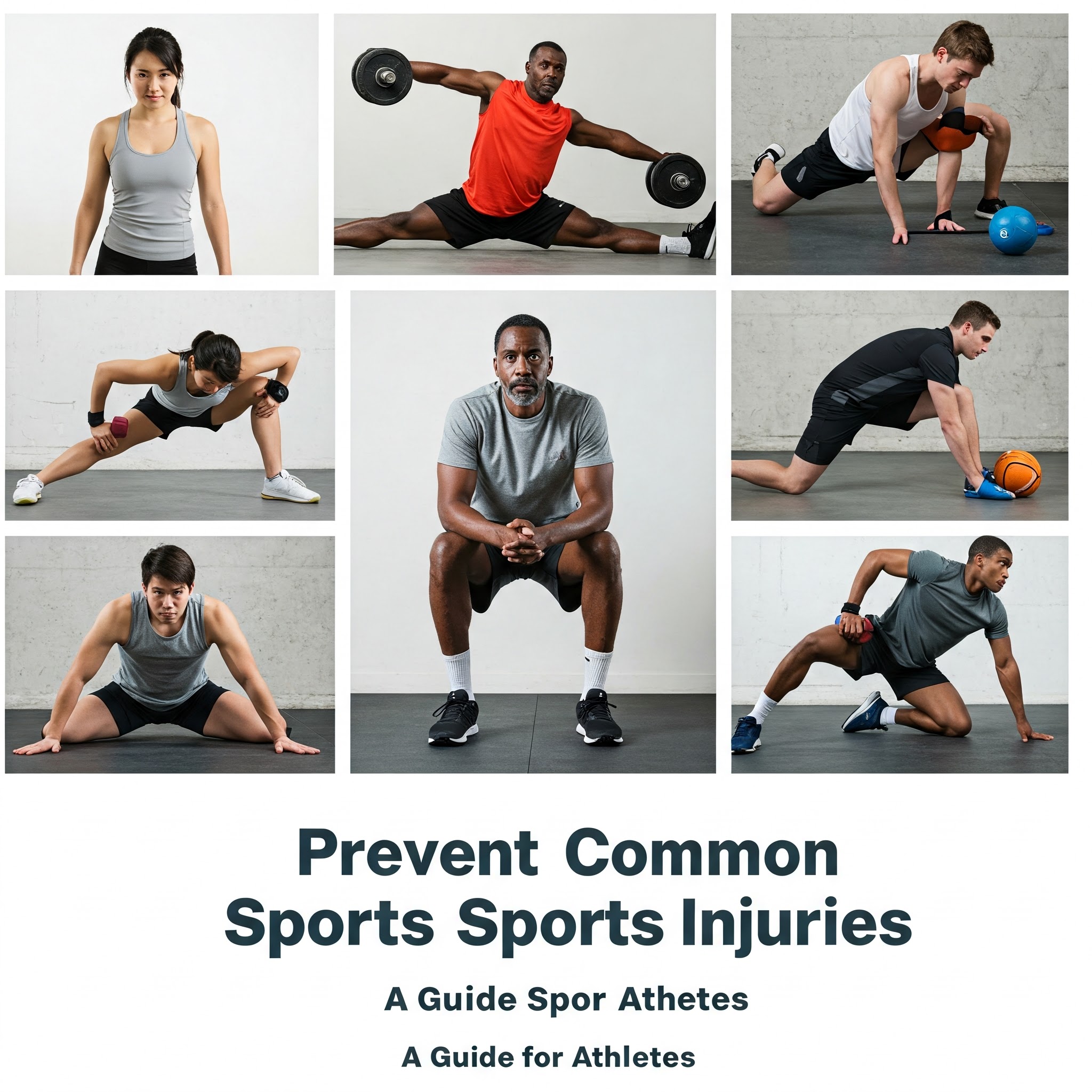
Preventing Common Sports Injuries: A Guide for Athletes
Stay ahead of injuries with proactive strategies to keep your body strong, agile, and ready for peak performance in any sport.
Sports injuries can sideline even the most dedicated athletes. However, many injuries are preventable with the right approach to training, preparation, and recovery. In this article, we’ll explore evidence-based strategies to help athletes minimize their risk and stay game-ready.
Understanding Sports Injuries
Sports injuries typically fall into two categories: acute injuries (caused by sudden trauma) and overuse injuries (developing over time due to repetitive stress). Common types include:
- Sprains (ligament injuries)
- Strains (muscle or tendon injuries)
- Shin splints
- Tendonitis
- Stress fractures
- Dislocations and concussions
Top Strategies for Injury Prevention
1. Proper Warm-Up and Cool-Down
A dynamic warm-up primes the body for movement, improving circulation and muscle readiness. After activity, a cool-down helps reduce soreness and supports recovery.
2. Strength and Conditioning
Building overall strength — especially in stabilizing muscles — enhances joint support and movement control, reducing the likelihood of injury.
3. Flexibility and Mobility Training
Stretching and mobility exercises help maintain joint range of motion, improve posture, and correct muscular imbalances — all key for injury prevention.
4. Sport-Specific Technique
Poor technique increases strain on muscles and joints. Working with a coach or therapist to refine form can dramatically lower injury risk.
5. Adequate Rest and Recovery
Overtraining without sufficient rest increases the risk of overuse injuries. Athletes should build recovery days into their schedule and listen to signs of fatigue.
6. Hydration and Nutrition
Dehydrated or undernourished muscles are more prone to cramping and strain. A balanced diet with proper hydration fuels both performance and recovery.
7. Wearing the Right Gear
Supportive footwear, protective gear, and appropriate clothing play a crucial role in preventing accidents and reducing impact-related injuries.
Common Injuries by Sport
Injuries can vary depending on the sport. Here are some examples:
- Running: Shin splints, IT band syndrome, stress fractures
- Basketball: Ankle sprains, ACL tears, jumper’s knee
- Swimming: Rotator cuff injuries, swimmer’s shoulder
- Soccer: Groin pulls, hamstring strains, concussions
- Weightlifting: Lower back strain, wrist and elbow injuries
When to See a Sports Therapist
Early intervention can prevent minor issues from becoming chronic problems. Consult a professional if you experience:
- Persistent pain or swelling
- Reduced range of motion
- Instability or weakness in a joint
- Recurring injuries in the same area
Preventing Injuries Is a Long-Term Game
Consistent prevention strategies pay off in long-term athletic health and performance. Injuries not only set back progress but can also lead to psychological stress. Staying proactive with your body care is the smartest way to stay in the game.
At Reccova, our sports therapy team specializes in helping athletes prevent and recover from injuries through personalized assessments, rehabilitation programs, and performance training. Whether you're a weekend warrior or an elite competitor, we’re here to support your active journey.
